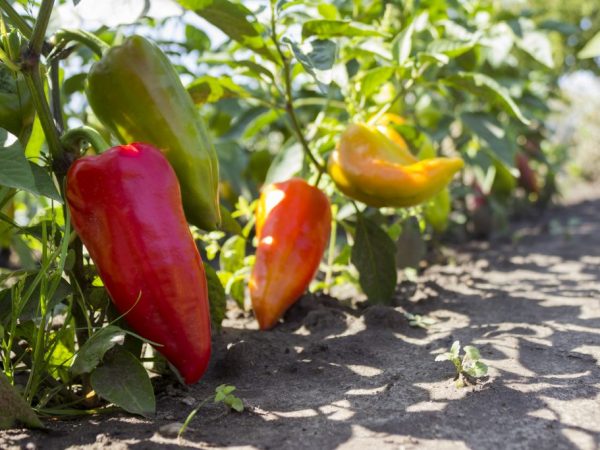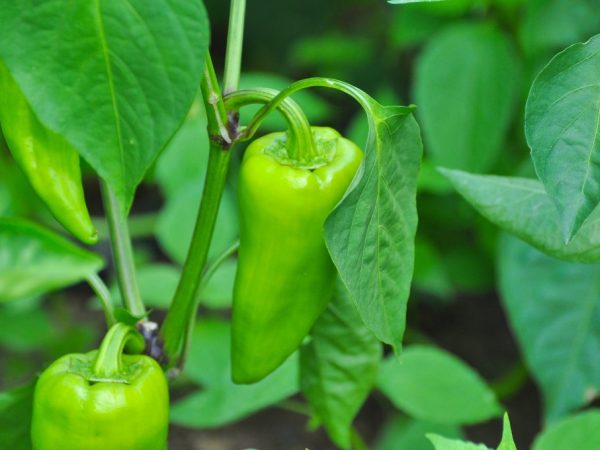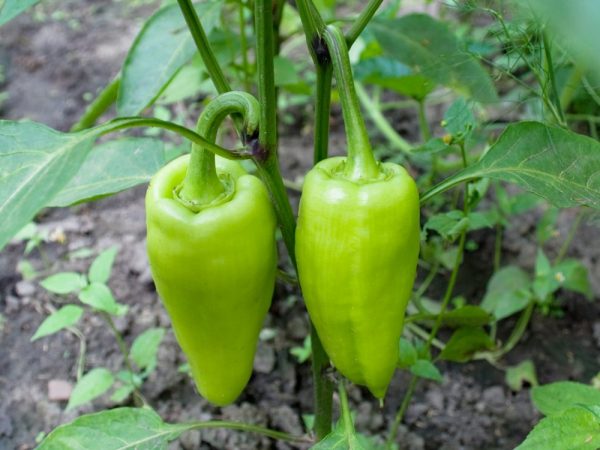Characteristics of the Admiral f1 pepper variety
Sweet salad pepper Admiral is an early ripening variety. It is suitable for growing both in greenhouses and in the garden. Thanks to these qualities and productivity, it has earned popularity among gardeners living in temperate and cool regions of the country.

Characteristics of the Admiral f1 pepper variety
Variety characteristic
Admiral f1 is a special grade. It was developed by Siberian scientists for an area that does not have high temperature indicators. The variety is early maturing.
Thanks to the indicators, the Admiral f1 is excellent not only for regions with severe temperature conditions, but also for other regions of the country.
Description of the bush
Bulgarian Admiral f1 has low bushes, reaching a maximum length of 0.85 m. The shape looks like small trees. The thick stem, half open, has many branches with dense foliage. Due to the low density of branches in the garden, it looks compact.
Thanks to the massive trunk, the bush perfectly withstands the weight of the fruit and does not spread on the ground. This quality makes it possible not to tie up lateral shoots.
Description of the fetus
Pepper of this variety has large pyramidal fruits, the weight of which reaches 100 g. In the process of ripening, the fruits are green, when ripe they turn red. The walls are thick - 5-8 mm. The pulp has a large amount of sugars and various vitamins, so the variety is recommended to be consumed fresh.
Due to high yields, from 1 sq. m are harvested up to 7 kg of vegetables in an open area and up to 9-10 kg in a greenhouse. The variety has 2-3 nests, in which several ovaries are formed.
The vegetable ripens within 100-110 days after sowing the seeds. A big plus is the possibility of long storage at low temperatures.
Care

Plants are easy to care for
The admiral, thanks to its excellent adaptation to the environment, does not need special care, but it still takes a little work to get a good harvest.
Growing seedlings
The seeds of this variety have a germination rate of about 90%. Before use, it is recommended to check the planting material. To do this, use the following methods:
- Germinate a certain number of seeds by wrapping them in a wet cloth and placing them in a dark and warm place. They are checked for germination after 4-6 days. If the result is satisfactory, the seeds can be safely used when planting.
- In 1 liter of boiled water, stir 40 g of baking soda and pour the grains under test there. All this is gently stirred with a spoon and waited for 2 minutes. The grains are divided into 2 parts. Seeds that float to the surface are not suitable for planting due to the lack of nutrients in them.
Selected seeds are planted in the ground 0.5-1 cm deep. Breeding of seedlings begins at the end of February and lasts until the beginning of May. They approach the planting process with care, since the roots of a young plant are easily damaged. Peat cups are perfect for this.They serve as additional feeding for the seedling. Nutrient-rich special blends are also used.
An important criterion is compliance with the temperature regime. Young plants thrive at 25-28 ° C.
Planting in open ground
Before planting seedlings, they take care of preparing the plant for the external environment. For 2 weeks, the seedlings are exposed for some time to the open air with a gradual increase in time.
For transplanting, the soil where previously crops, onions, peas, carrots or cabbage were grown, is ideal. If growing in a greenhouse is planned, the seedlings are planted in May. The distance between the bushes should be at least 60 cm.On the beds, this distance decreases to about 40 cm.
Watering
When growing sweet peppers, Admiral also monitors the level of moisture in the soil. Regular watering makes it possible to harvest a rich harvest. For these purposes, warm settled water is suitable. In the area with the planted pepper, dark containers (metal or plastic) filled with water are placed. During the day, the water settles and warms up well from the sun's rays.
Watering is done after sunset. At the same time, they monitor the condition of the soil, in no case do they allow it to dry out. The ground is left slightly damp.
Fertilizer
When growing peppers, do not forget about fertilization. During the growth process, the variety is fed with nitrogen several times. After waiting for the fruit to set, they additionally make a potassium-phosphorus feed, do not forget to regularly loosen the soil.
Pests and diseases

Plants do not tolerate sudden changes in temperature
Pepper is susceptible to a variety of pests and diseases. That is why it is worth taking care of preventive actions. For disinfection, the seeds are treated with a solution of potassium permanganate.
You can not plant peppers in the soil where potatoes or tomatoes were growing before. Bulgarian pepper Admiral does not like excessive humidity and sudden changes in temperature. Many diseases of the pepper can be taken over by the plants remaining in the ground after the previous season.
Pests
If the plants have been attacked by unwanted pests, it is worthwhile to immediately begin to fight them.
Aphid
This pest is dangerous for pepper bushes. The leaves turn yellow and soon fall off. To combat aphids, the plant is treated with wood ash diluted in water (a glass of ash for 10 liters of water). Spraying is done in the morning. Also an excellent option is to use the drug Karbofos.
Mite
The mite is a common pest. The bushes against it are treated with a mixture of garlic, onions and dandelion leaves. You can spray the plant at any stage of development.
Naked slugs
Naked slugs are leaf pests. It feeds on both fruits and leaves. Slugs can be seen in rainy weather or in the evening. An effective way to combat is the substance metaldehyde. Also, do not forget about the timely removal of weeds from the site.
Medvedka
Medvedka appears as a result of waterlogging of the soil, destroys the roots of the plant, which later leads to its death. At the end of spring, the beds are loosened: this helps to destroy the larvae of the parasite. Medvedka does not tolerate the smell of kerosene and naphthalene - it is with these substances that their habitats are treated.
Diseases
Fusarium and sclerotinia
The plant is affected by a fungus, which is accompanied by abundant shedding of leaves. This is a very dangerous disease that can take root in the soil for a long time. The plant affected by the disease is immediately removed from the garden, the soil is loosened. At this place, it is not advised to plant peppers and eggplants for the next season.
Late blight
Late blight is a disease characterized by the appearance of black spots on fruits. It is worth fighting this disease by spraying the plant with the preparation "Zaslon" or "Barrier". This should be done before the pepper blooms.
Blackleg
The disease develops due to the large amount of moisture in the soil, affects the roots, which leads to the further death of the plant. The insidiousness of this disease lies in the fact that it can appear even during the period of growing seedlings. It is worth fighting it by reducing the amount of moisture in the soil by drying it. An effective means of control is "Zaslon", moderately sprayed on the plant.
You need to regularly inspect pepper bushes in order to prevent the appearance of various diseases or to start fighting them in the early stages.
Conclusion
Due to its characteristics and excellent taste, Admiral is a popular variety among most gardeners. Due to its resistance to cold, the variety can be grown in regions with harsh climatic conditions.
The correct approach to seed selection helps to grow a large number of healthy shrubs. Proper care, prevention, control of various diseases and pests helps to grow a rich harvest.


